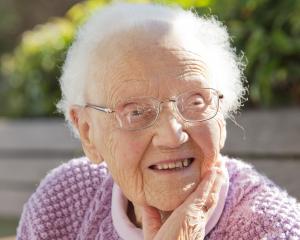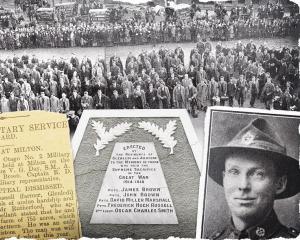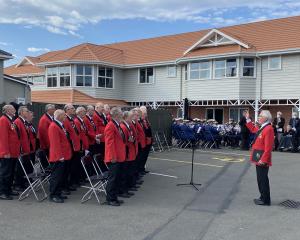John Milne (85), who served with the Royal New Zealand Air Force in Europe, was one of dozens of veterans attending the dawn service at the Dunedin Cenotaph on Saturday.
World War 2 veterans led parades and attended services across the country where thousands turned out.
Dunedin's was one of the larger gatherings, an estimated 9000-strong crowd nearly matching the estimated 10,000 at services in Christchurch and Wellington, and similar numbers at the main Auckland ceremony.
Hundreds also gathered at smaller services across Otago.
Mr Milne said getting up at 5am and going out into the cold was getting beyond many of the older veterans now, and he suspected his own plans to go to the dawn service, have a cup of tea at HMNZS Toroa afterwards and then head home, were probably similar to those of most World War 2 veterans who still participated in Anzac Day.
He counted himself, at 85, as one of the younger surviving New Zealand world war veterans and said it was important he went as long as he could to honour those who died in the war.
"There's a lot now who can't actually get down here now.
Somebody has to."
Of the 14 remaining members of the Brevet Club in Dunedin (the club once boasted 127 members), only Mr Milne and Fraser Mitchell, of Mosgiel, made it to the dawn parade on Saturday.
Mr Mitchell (87) served as a navigator on Ventura aircraft fighting the Japanese in the Pacific during World War 2.
Anzac Day was also an opportunity to catch up with fellow veterans, he said.
Over tea at HMNZS Toroa, Mr Mitchell said the air force had offered young people the opportunity to travel, including for flight training in Canada.
In fact, he was disappointed when he found out only half his intake was going to Canada.
"We drew straws and I got New Zealand so I sneaked it back in and, what do you know, I pulled New Zealand the second time, too."
Later, in battle, he was to see airmen die and his turret gunner seriously injured in enemy fire, and would narrowly escape injury himself, his plane limping home more than once with "a few holes in us".
He also recalled the constant lack of food for the Kiwi troops.
"I got down to about seven stone (44kg).
If it wasn't for the Yanks [giving them food], I reckon we wouldn't have made it back at all."
A gunner with the 195th Squadron based at Wratting Common in England, Mr Milne's experience was different in that he first arrived overseas as a 20-year-old in October 1944, when the war was "virtually" over.
While it was not a "luxury" war for him by any means, he did recall being hassled because he had sheets in which to sleep.
It was probably only because he went so late [because of his age] that he came back alive, he said.












